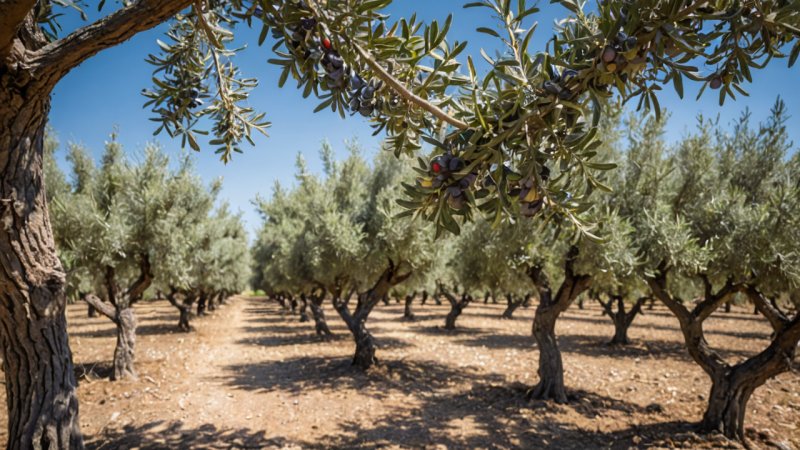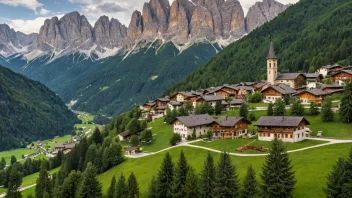Olive oil, a staple in Mediterranean cuisine, has a rich history that intertwines with culture, tradition, and culinary excellence. It is more than just a cooking ingredient; it is a symbol of health, flavor, and authenticity. The journey of olive oil from tree to table is a fascinating process that reflects the dedication of farmers, the intricacies of production, and the artistry involved in its use in kitchens worldwide. As we embark on this journey, we will uncover the careful cultivation of olive trees, the meticulous harvesting process, and the magical transformation that occurs during the production of this liquid gold.
The Cultivation of Olive Trees
The journey begins in the sun-drenched orchards where olive trees thrive. Cultivating these trees requires a deep understanding of their needs and a commitment to sustainable farming practices. Olive trees prefer a Mediterranean climate, characterized by hot, dry summers and mild, wet winters. They are incredibly resilient, often growing in poor soil conditions where other crops may fail.
There are numerous varieties of olive trees, each yielding olives with unique flavors and characteristics. Some of the most famous varieties include the Arbequina, Koroneiki, and Manzanilla. Farmers often select the variety based on the desired flavor profile of the oil they wish to produce. Careful attention is given throughout the growing season, including irrigation, pest control, and pruning, to ensure healthy fruit production.
Harvesting Olives: The Art of Picking
The harvesting of olives is a crucial step in the production of olive oil, and it can be done in several ways, each with its own advantages. Traditional hand-picking is the most labor-intensive but yields the highest quality olives. Workers carefully pluck the ripe olives from the branches, ensuring that they are not bruised or damaged. This method is often employed in small-scale farms where quality is prioritized over quantity.
In larger orchards, mechanical harvesting has become common. Machines shake the trees, causing ripe olives to fall onto nets spread out on the ground. While this method is efficient and cost-effective, it may result in a mix of unripe and overripe olives, potentially affecting the flavor of the oil. Regardless of the method used, olives should be processed as soon as possible after harvesting to maintain their freshness and quality.
The Pressing Process: Turning Olives into Oil
Once harvested, olives are taken to the mill for pressing. The first step in this process is washing the olives to remove any dirt or debris. Next, the olives are crushed into a paste using large stone mills or modern hammer crushers. This paste contains not only the olive flesh but also the pit, which can add bitterness if not carefully managed.
After crushing, the paste undergoes a process called malaxation, where it is gently mixed to allow oil droplets to coalesce. This step is critical, as it can significantly impact the yield and flavor of the oil. The duration and temperature of malaxation are carefully controlled to preserve the oil's delicate aromas and health benefits.
Once the paste has been mixed, it is subjected to pressing or centrifugation to separate the oil from the solid components. The extracted oil is then filtered to remove any remaining impurities, resulting in pure olive oil. The quality of the oil is determined by several factors, including the variety of olives, the ripeness at harvest, and the extraction method.
Understanding Olive Oil Grades
Not all olive oils are created equal. There are different grades of olive oil, each with distinct characteristics. The most revered is extra virgin olive oil, which is made from the first cold pressing of olives and has a low acidity level (less than 0.8%). It is celebrated for its fruity flavor, intense aroma, and rich health benefits.
Virgin olive oil is the second grade, also made from the first pressing but with slightly higher acidity. Pure and light olive oils are more processed and may be blended with other oils, often lacking the robust flavors found in extra virgin olive oil. Understanding these grades is essential for consumers, as it allows them to choose the best oil for their culinary needs.
From Table to Taste: Culinary Uses of Olive Oil
Once the oil is bottled, it embarks on its final journey to kitchens around the world. Olive oil is incredibly versatile, serving as a base for dressings, marinades, and sauces or simply drizzled over vegetables and bread. It can be used for sautéing, roasting, or as a finishing touch to elevate a dish's flavor profile.
In addition to its culinary applications, olive oil is known for its health benefits, being rich in monounsaturated fats and antioxidants. It has been linked to heart health, improved digestion, and reduced inflammation, making it not just a delicious choice, but a healthy one as well.
Embracing the Olive Oil Culture
Traveling to regions where olives are cultivated offers a unique opportunity to immerse oneself in the local culture. Many countries, including Italy, Spain, Greece, and Turkey, boast olive oil tours where visitors can learn about the cultivation and production processes firsthand. These tours often include tastings, allowing travelers to appreciate the nuances of different oils and to connect with the passionate farmers who dedicate their lives to this craft.
In addition to tours, local markets offer a chance to sample and purchase artisanal olive oils, each with its unique story and flavor profile. Engaging with local producers enhances the travel experience, providing insights into the traditions and techniques that have been passed down through generations.
The Future of Olive Oil
As the world becomes more health-conscious, the demand for high-quality olive oil continues to rise. However, challenges such as climate change, pests, and over-farming pose threats to olive production. Sustainable practices and innovation in farming and production are critical to safeguarding the future of this beloved ingredient.
Efforts are underway to promote organic farming, improve harvesting techniques, and educate consumers about the importance of quality over quantity. As travelers seek authentic culinary experiences, supporting local producers and understanding the journey of olive oil can contribute to the preservation of this ancient tradition.
In conclusion, the journey of olive oil from tree to table is a testament to nature's bounty and human dedication. From the care taken in cultivating olive trees to the artisanal methods of production, each step in the process enriches our culinary experiences. Whether drizzled over a fresh salad, used in a traditional dish, or savored on its own, olive oil connects us to the land, the people, and the rich culture of the regions it comes from. As we explore the world of olive oil, we not only enhance our plates but also deepen our appreciation for the labor and love that goes into every bottle.






